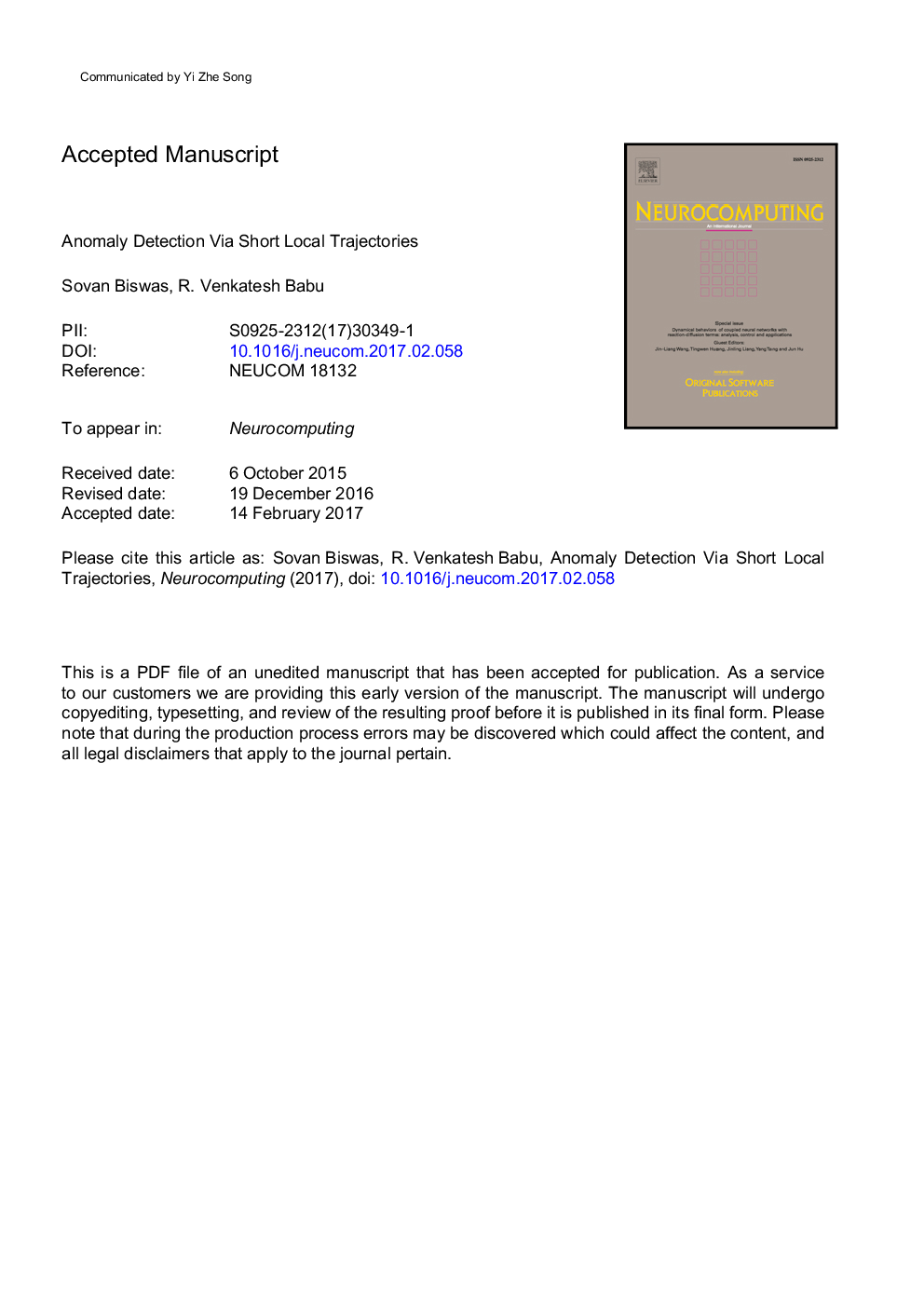| Article ID | Journal | Published Year | Pages | File Type |
|---|---|---|---|---|
| 4947520 | Neurocomputing | 2017 | 31 Pages |
Abstract
Trajectory provides an important motion cue in describing the behavior of the moving object and can be used effectively for anomaly detection. But traditional trajectories or tracklets used for analysis have limitations due to various tracking irregularities. In this paper, we propose a novel idea of detecting anomalies in a video, based on short history of a region in motion. These histories are defined as short local trajectories (SLT). In contrast to traditional tracklets, these SLTs are extracted for super-pixels belonging to foreground objects. This captures both spatial and temporal information of a candidate moving object. Furthermore, the proposed trajectory extraction is suitable across videos having different crowd density, occlusions, etc. The trajectories of persons/objects at a particular location under usual condition have certain attributes. Thus, we have used Hidden Markov Model (HMM) for characterizing the usual trajectory patterns for each defined region. The proposed algorithm takes SLTs as observations and measures the likelihood for each super-pixel of being anomaly based on learned HMMs. In order to avoid the influence of noisy trajectories, we have computed spatial consistency measure for each SLT based on the neighboring trajectories. Thus, anomalies detected by the proposed approach are highly localized as demonstrated from the experiments conducted on three anomaly datasets, namely UCSD Ped1, Ped2 and a newly proposed CHUK-Crowd Anomaly Dataset.
Keywords
Related Topics
Physical Sciences and Engineering
Computer Science
Artificial Intelligence
Authors
Sovan Biswas, R. Venkatesh Babu,
